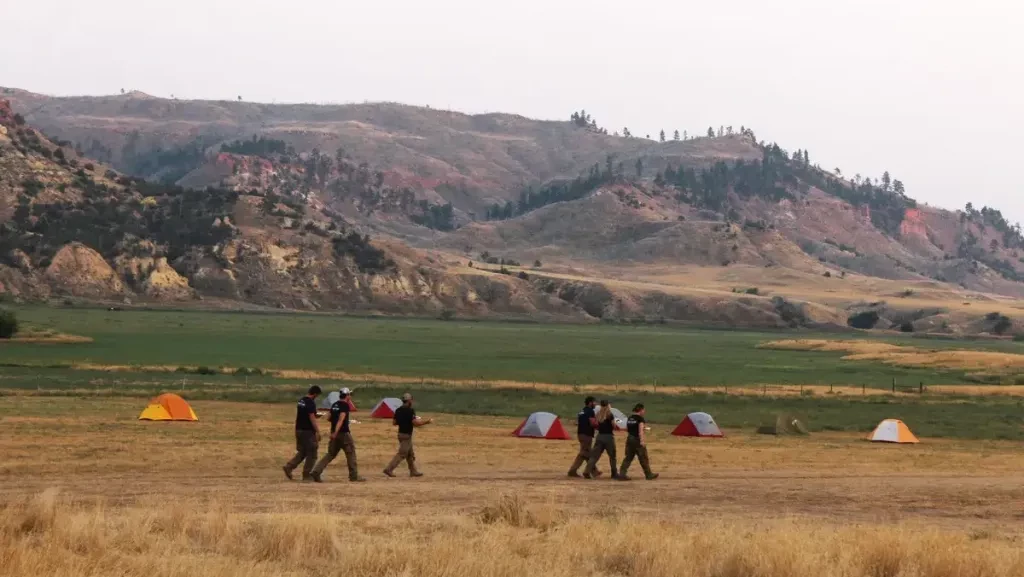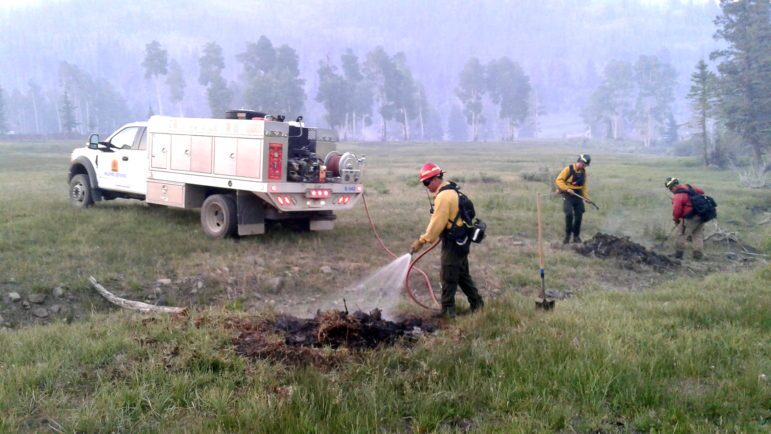As one of the most fire-prone states in the nation, Montana saw 2,322 wildfires burn 352,491 acres last year, according to the Northern Rockies Coordination Center.
It takes hundreds of firefighters to respond to those blazes and fighting major conflagrations requires immense levels of interagency coordination, leadership and organization.
Firefighters on a wildfire blaze are often required to spend shifts of 14 to 16 hours a day hiking through steep terrain, clearing the fireline of flammable vegetation and extinguishing smoldering material inside the fire’s perimeter. Wildland firefighters endure conditions of intense heat, smoke and extreme weather.
The path to the fireline can be as unique and variable as the fires themselves. So, whether you’ve ever found yourself wondering what kind of forces fight fires in the state or the types of certifications these positions require, this article aims to explain the broad strokes of wildland firefighting in the state.
Federal Firefighting
To join the federal firefighting force, there are a few requirements that apply to all wildland firefighters, regardless of whether they’re fighting forest fires for the U.S. Forest Service, putting out rangeland fires for the Bureau of Land Management, or responding to blazes inside the borders of a national park.
Forest Service spokesperson Mariah Leuschen-Lonergan said support personnel must meet strict training and fitness standards before they’re certified to assist in wildfire response. Successfully completing this training and meeting these standards qualifies a firefighter for their “red card.”
Watch related coverage: Montana Army and Air National Guardsmen volunteer for Red Card training
Red card is shorthand for the Incident Qualification Card — a credential issued to firefighters who meet all standards to fight wildfires as set by the National Wildfire Coordinating Group (NWCG), a national and state collaborative organization that provides leadership on large wildfires. Any firefighter responding to a fire managed by state or federal agencies must have a red card.

The certification requires classroom training covering topics like fire behavior, safety on the fire line and incident command structure. Candidates must also pass an annual “pack test,” covering three miles on foot carrying a 45-pound pack in under 45 minutes. The final element of red card certification is demonstrating field competency with various wildfire fighting tools.
These are the baseline requirements for federal and state firefighters to go out on the fireline. Federal forces typically operate with more resources and deploy more specialized units like interagency hotshot crews and smokejumpers. State-employed firefighters are more likely to respond to fires that start on private land.
Workforce cuts from the Trump administration and the Department of Government Efficiency have shaken the federal wildfire-fighting force this year. While the administration claims they did not fire any frontline firefighters, red card holders in various other federal roles are no longer employed with the federal government throughout the United States.
State Fire Forces
The Department of Natural Resources and Conservation, which manages state-owned land in Montana, employs wildland firefighters who respond to major incidents on public and private land. DNRC firefighters face the same formidable conditions as their federal counterparts.
“You might be hiking down with a chainsaw and a hand tool and putting fires out without water,” said Dustin Lenz, assistant fire management officer for DNRC’s northeastern division.
Applications to become part of the state or federal forces can be competitive, Lenz added. “The system can be daunting.” The firefighters DNRC hires must have red card status, plus meet other requirements that are as stringent as those for federal crews.

But for those just wanting to get involved and start to build competency in firefighting, there’s a more direct route: local fire departments.
“The volunteer departments by far put out the most fires,” Lenz said. “Generally, when the feds get involved or the state gets involved, [the fires] have become big already. A majority of fires are put out under 10 acres.”
U.S. Forest Service data shows that over 75% of wildfires nationwide are kept below 10 acres. Local fire departments and their volunteer forces, are a critical part of that early response.
Each January, the DNRC opens applications for seasonal firefighting roles and hires around 150 wildfire personnel each year.
Local Departments
Local departments are the first defense against new fires within their fire districts. They operate under three pay structures: paid, volunteer or combined paid and volunteer districts.
Serving as a local firefighter can be a more flexible path to wildfire response than working for state or federal agencies. Volunteer firefighting especially can be an avenue to learn about fires and gain experience with varying time commitment options. Some volunteer or combination departments offer shift work and others allow members to respond as needed.
Physical requirements like the pack test are not necessary for all volunteer firefighters. Only those seeking red card certification must complete the NWCG process. Other volunteer roles may involve limited physical exertion, such as helping with fire mitigation via clearing flammable materials or community outreach by informing members of their communities on how to safely evacuate and how to access fire resources.
Federal workers across several agencies are losing their jobs at a breakneck pace. In Montana, Wyoming and Idaho — across Greater Yellowstone and beyond — employees with the U.S. Forest Service, National Park Service and more are concerned their positions may be on the chopping block. The layoffs are coming fast from the Trump administration at the direction of its Department of Government Efficiency, or DOGE, led by billionaire and Tesla founder Elon Musk.
The Central Valley Fire District, which covers 210 square miles of south-central Montana and serves communities like Belgrade, Four Corners and Springhill, relies heavily on volunteers.
“We have EMS-only volunteers, all-around volunteers that do EMS and fire, and then we have rural volunteers,” Central Valley Fire Department Deputy Chief Jeff Hurley told MTFP on June 26.
Volunteers at Central Valley have opportunities to continue training and become paid firefighters, though some choose to remain volunteers.
“ Some just want to contribute to the community. We have a few firefighters that are fantastic firefighters and they have all of those certifications and they just wanna give back to their community,” Hurley said.
There are over 470 fire stations in Montana and 350 volunteer departments across the state. Volunteer departments have had trouble in recent years attracting and retaining volunteer firefighters.
Other Pathways
In addition to state, federal and local agencies, private contract crews also respond to wildfires in Montana. One of the most active groups is Grayback Forestry, which sends firefighters to large incidents all across the country and puts its crews to work on forestry projects during slow periods. This year, however, has not been particularly slow for Grayback crews.

“Our crews in Montana have already been out, I think, on three to four fire assignments each,” Grayback Forestry General Manager Bryan Wheelock said.
Some other private companies with a presence in Montana include Rocky Mountain Fire Company and Wildfire Defense Systems. Additionally, some private aerial companies with a presence in Montana include Bridger Aerospace, Neptune Aviation and Dauntless Air.
As of Monday, July 14, there are 56 active fires burning in Montana. 17,600 acres have burned in the state so far this year.


